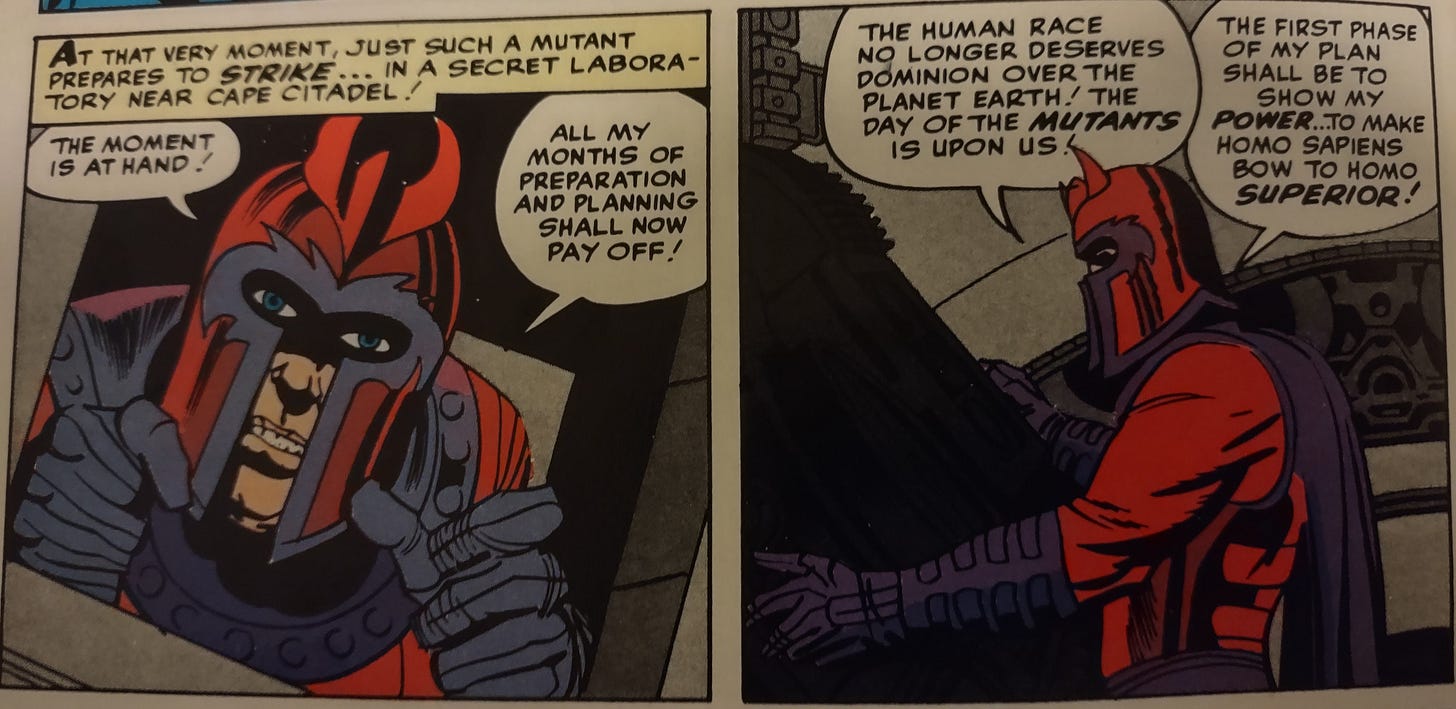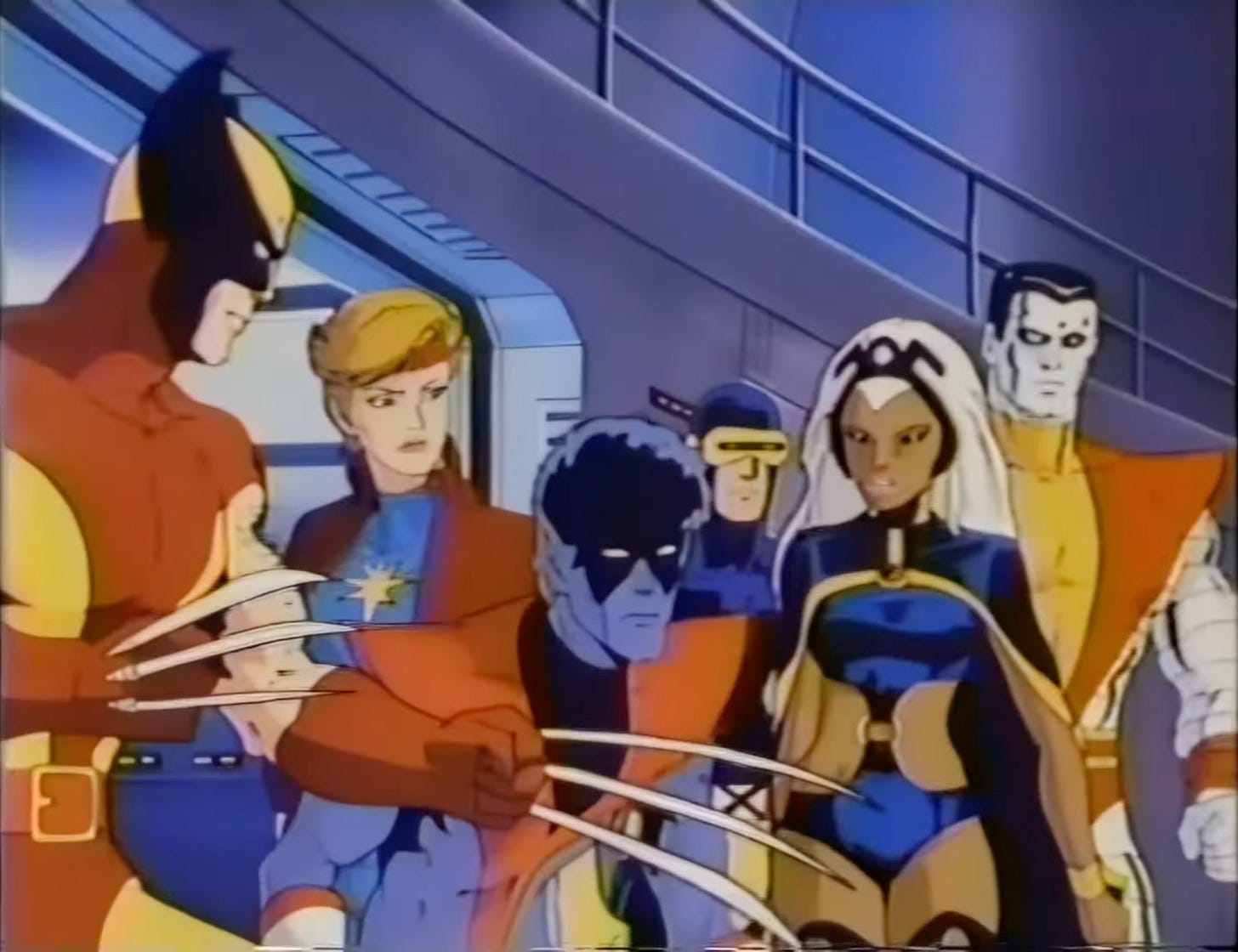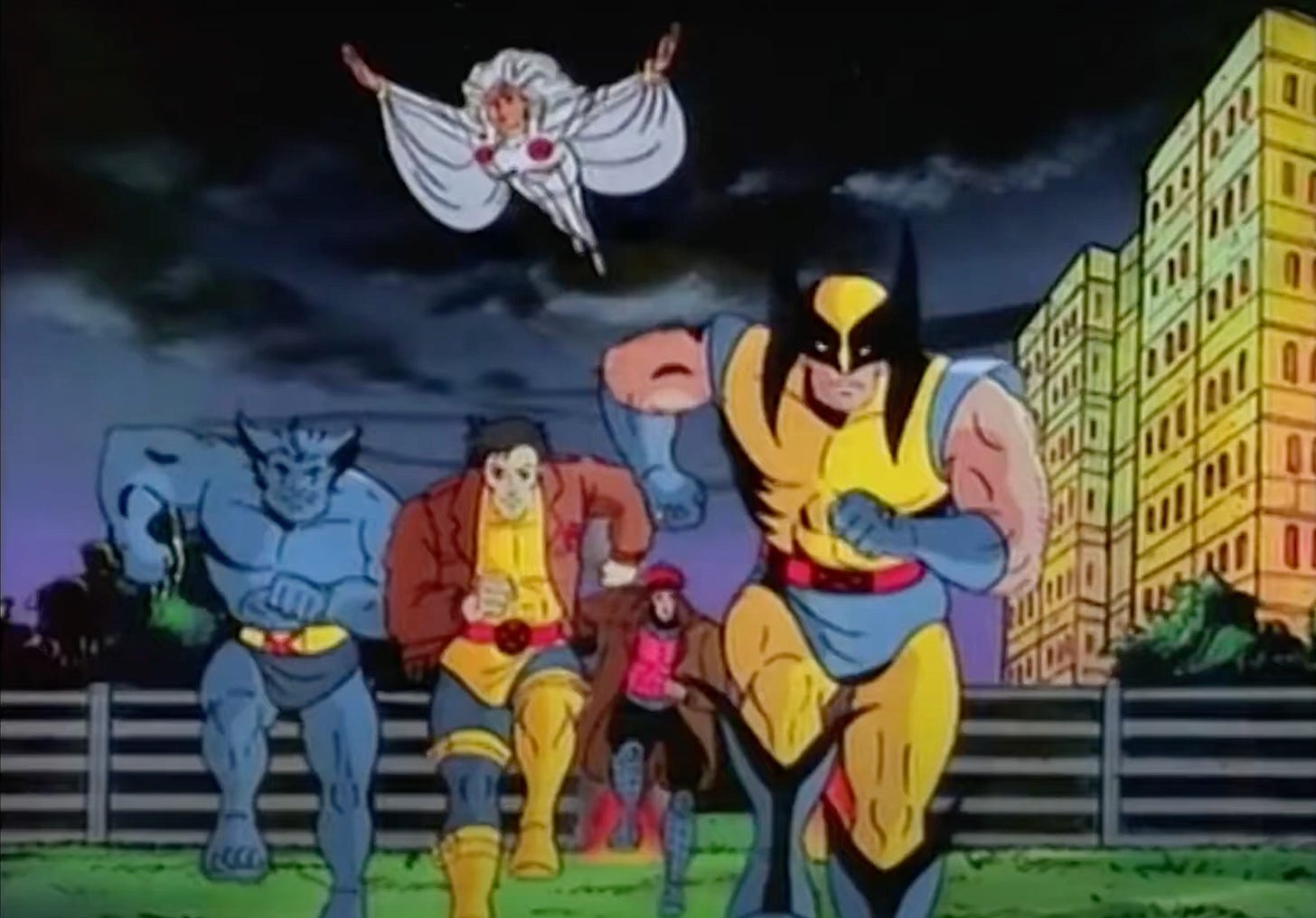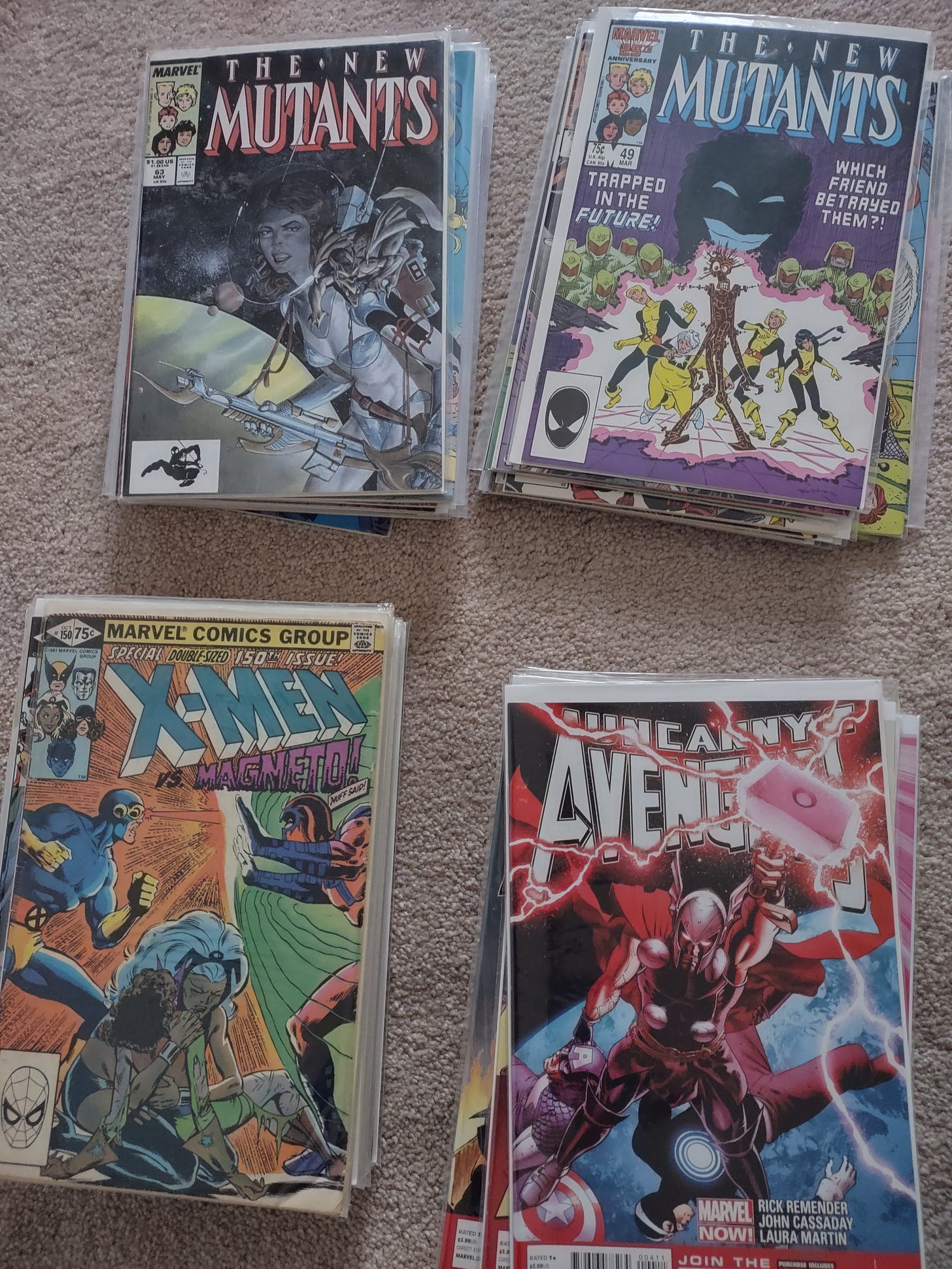‘Pryde of the X-Men’: Too Much and Not Enough
The X-Men's first animated pilot resembles a typical first draft.
The X-Men had one of the greatest superhero cartoons of all time. I consider Batman: The Animated Series and Justice League/Justice League Unlimited to be the pinnacle, but the 1992-97 X-Men series comes in right below them.
Even after all these years, that theme song immediately puts me in an X-Men mood.
I hear that and I know something exciting is about to happen.
That’s what we got in the ’90s. But in 1989, X-Men fans were teased with this:
It has a cheesy sort of charm to it, but it is heavy on the cheese.
This version never got past its pilot episode, “Pryde of the X-Men.” We meet the X-Men through the eyes of young Kitty Pryde as she arrives at the mansion for the first time. Meanwhile, Magneto and his Brotherhood of Mutant Terrorists plot to plunge the world into a new ice age and destroy mankind.
It’s very much an ’80s superhero cartoon. Judged by those standards, it’s more polished than you might expect. The animation looks great, and the character designs are spot-on. The simple plot gives Kitty a straightforward, kid-friendly arc: She’s scared, she screws up, she pulls herself together, and she helps the X-Men save the day. Had it continued, the show easily could have surpassed Spider-Man and His Amazing Friends.
But judge it against ’90s superhero cartoons, and the whole thing falls flat. It has the same problem that many early drafts do (my own absolutely included): It’s both too much and not enough.
We meet a full team of X-Men, and we meet a full team of villains. Magneto’s scheme imperils the entire world, and the X-Men need to double as astronauts to stop him—it’s day one, and they’re already heading out into space and saving humanity from potential extinction. We get a fake-out death that’s immediately undone. And Kitty develops into a potential X-Man awfully quickly.
At the same time, we hardly get to know any of these colorful individuals. Kitty, as our viewpoint character, receives the most development, and Nightcrawler’s personality is clearly drawn. Everyone else strikes one note or less. It feels like we’re being introduced to a line of action figures. (Can’t lie, though. Had I watched this when I was six, it definitely would have sold me on any related toy line.)
Comic book Magneto had developed into a fascinating character by this point, but here, he shows slightly more depth than Shredder from the Teenage Mutant Ninja Turtles cartoon, which debuted a couple of years earlier. If he had a handlebar mustache, he’d be twirling it magnetically. The personality isn’t too far removed from the Magneto of the ’60s comics, but the scope of his plan exceeds all sense. Would his fellow mutants want to live in a new ice age? Presuming most of them even survived the cataclysm, that is.

Also, in the opening scene, Magneto has been captured by the U.S. military, and the White Queen creates a diversion that allows him to free himself. That’s an odd choice. He’s supposed to be the big bad; he’s even called out by name in the opening theme song. But the first thing we learn about him is that he’s already been defeated. We don’t know whether it was the X-Men, Avengers, or army, but someone caught him. A villain who’s been thwarted seems far less imposing than one who remains undefeated. Why not just show us Magneto freeing one of his henchmen instead?
The exception would be if a multi-episode arc was structured around the threat of Magneto regaining his freedom (like the Master in the first season of Buffy the Vampire Slayer). The X-Men face off against lesser foes in the earlier episodes, and then they confront their greatest challenge yet in the season finale. And somewhere along the way, we flash back to Magneto’s earlier defeat and learn about the extraordinarily high cost of defeating him. However, that might have been too much serialization for a show aimed at young children.
The ’90s X-Men cartoon skewed a little older. That was the last cartoon I watched before I deluded myself into thinking I was too old for any cartoons. Watching that show as a middle schooler never felt childish, but watching this “Pryde of the X-Men” version would have.
Uncanny Coincidences
Since it’s too bizarre to go unmentioned, let me be the millionth person to point out Wolverine’s inexplicably Australian accent and its accidental foreshadowing of Hugh Jackman years before the movies.
There’s another bit of accidental foreshadowing, though, one that only comic book readers would notice: When the X-Men barge into Magneto’s asteroid base, they get paired off into fights with Brotherhood members. Cyclops winds up in a duel with the White Queen. These two were clearly destined for each other.
Her?
The lineup resembles the comic book X-Men of 1980, which was the logical choice, except for one notable substitution. Instead of Phoenix, or any iteration of Jean Grey, the show decided, “Nah, let’s go with Dazzler.”
I can only speculate as to the reason, but it does make a sort of sense if you think of this as an ’80s cartoon. They probably wanted to steer clear of any soap opera elements, such as a love triangle between Cyclops, Jean, and Australian Wolverine.
Plus, Jean’s telepathy could have seemed redundant with Xavier’s power (though they could have focused on her telekinesis instead). Psylocke would have been similarly redundant, and her backstory as Captain Britain’s twin sister may have given the producers pause. If the show had already committed to Colossus, then a second super-strong person wasn’t needed, so Rogue was out (and her Ms. Marvel–related backstory probably didn’t do her any favors). Polaris had Magneto’s powers, so same issue. The New Mutants had several girls, but they were all around Kitty’s age, so that would have introduced a different redundancy.
And that leaves us with Dazzler, a multimedia pitch born of the disco era.

Visually, Dazzler brought something different, and she spared Storm from being the only adult woman on the team. Hopefully, they had no intention of ever having her sing, but we’ll never know for sure.
The Game
As messy as early drafts tend to be, they can still springboard into something of value. From this cartoon, we got the X-Men arcade game—a video game masterpiece, even with the seemingly random inclusion of Dazzler instead of a more popular option.
So we are forever in this cartoon’s debt. But we’re also fortunate that people took another stab at it and produced a far superior X-Men cartoon.
X-Men ’92
The 1992 pilot has more breathing room, as it’s stretched across two episodes. More important, it focuses on the right priorities. It knows what needs to be developed in the pilot and what can be tabled for later episodes.
We still have a teenage girl as our viewpoint character to bring us into the X-Men’s world, though it’s Jubilee instead of Kitty. Whereas Kitty was merely a new student arriving at the mansion as scheduled, Jubilee gets involved with the X-Men because mutant-hunting robots are targeting her, which is far more dynamic, kinetic, and meaningful. And this does not become The Jubilee Show; she’s merely the entry point.
Rather than introducing a full team of villains, the pilot limits itself to the robotic Sentinels. The Sentinels are a good choice for an X-Men pilot—they help establish a world that hates and fears mutants, but they don’t require much in the way of character development. The X-Men, however, do all need some character development at this point, at least the basics, and the pilot succeeds in giving us a sense of each X-Man’s distinct personality and attitude, not just their powers.
To better focus on the X-Men first, the series wisely holds Magneto in reserve until the next episode, where he receives a proper debut without any henchmen to dilute our focus.
The pilot episode kills off one of the X-Men, and it was technically also a fake-out since he did return in later episodes. But at the end of the pilot, he’s still presumed dead, and he never rejoins the team. Plus, Beast gets arrested and remains in jail throughout the first season.
Right from the get-go, the stakes are raised and events have consequences. The cartoon is safe for kids but also invites older fans to enjoy it too. It’s still fun to watch all these years later.
For me personally, this cartoon got me into the X-Men, which in turn got me into the rest of Marvel.
Good thing they didn’t settle for that first draft.





Great breakdown and comparison of both shows. I'm more forgiving of the Pryde of the X-Men pilot because I think the animation, while dated, still pops. The Juggernaut scene at the X Mansion flows well. But yeah, the story is a bit silly. And that Wolverine accent! What were they thinking?The 1990s show on the other hand got me, like millions of fans, into comics and Marvel, more broadly. I too will check out XM 97.
Such a good post. I think that X-men release all looks a little knee jerk. Slow down and raise quality.